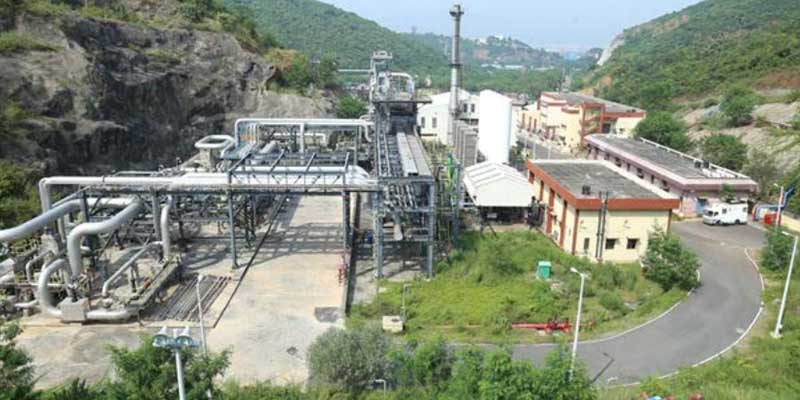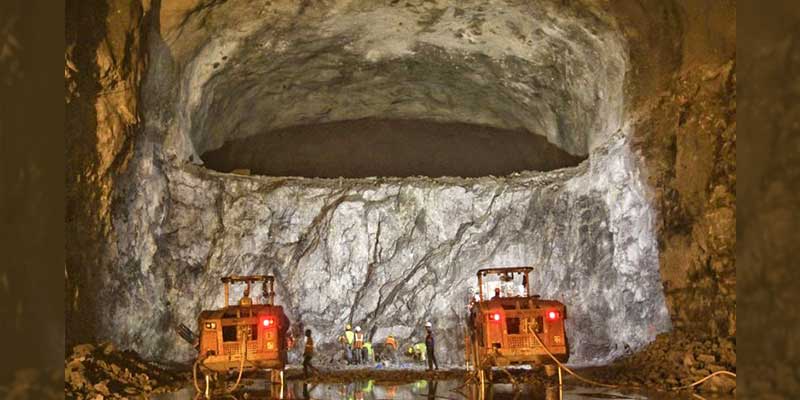- India
- Feb 03
Explainer / Strategic Petroleum Reserves
• The ministry of petroleum & natural gas informed Rajya Sabha on February 3 that the Strategic Petroleum Reserves (SPR) in the country have been filled to full capacity. This was done taking advantage of low crude oil prices in April-May 2020, leading to notional savings of approximately Rs 5,000 crore.
• Indian government has set up 5.33 Million Metric Tonnes (MMT) of emergency storage built in underground rock caverns in Mangaluru and Padur in Karnataka and Visakhapatnam in Andhra Pradesh.
• These strategic storages are in addition to the storages of crude oil and petroleum products with the oil companies and serve as a cushion during any supply disruptions.
• The total capacity is estimated to supply approximately 74 days days of India’s crude oil requirement.
What is Strategic Petroleum Reserve (SPR)?
• Keeping in view India’s high import dependence for oil and gas and in the interest of meeting the objective of country’s energy security, the ministry of petroleum and natural gas (MoP&NG), in pursuance to the decision of the Union Cabinet on January 7, 2004 took up construction of crude oil reserve facilities as a buffer to deal with any situation of supply chain disruption due to external reasons.
• A Special Purpose Vehicle (SPV) called Indian Strategic Petroleum Reserves Limited (ISPRL) was created on June 16, 2004.
• ISPRL has been mandated to build and operate strategic crude oil reserves. Subsequently, on May 9, 2006, ISPRL became a fully owned subsidiary of Oil Industry Development Board (OIDB).
• Under phase-I of Strategic Petroleum Reserve (SPR) programme, the government through ISPRL, has built SPR facilities with a total capacity of 5.33 Million Metric Tonnes (MMT) at three locations.
1) Visakhapatnam (1.33 MMT)
2) Mangalore (1.5 MMT)
3) Padur (2.5 MMT).
• The facility in Visakhapatnam was commissioned in 2015. The facility has two compartments Cavern A (1.03 MMT) and Cavern B (0.3 MMT). Cavern A is for strategic crude oil and is filled through funds made available by the government. Hindustan Petroleum Corporation Limited (HPCL) has taken Cavern B on a proportionate cost sharing basis. This is being regularly used by HPCL for its refinery operations at Visakhapatnam.
• Both the compartments of the facility in Mangaluru were commissioned in October 2016. Abu Dhabi National Oil Company (ADNOC) of UAE stores crude oil, at its own cost, in Cavern A under an Amended and Restated Agreement on Oil Storage and Management. The Cavern B has been filled with the government’s crude oil.
• The Padur facility was commissioned in December 2018. It is an underground rock cavern with a total capacity of 2.5 MMT having four compartments of 0.625 MMT each.
• The total reserve of Phase-I of SPR is currently estimated to supply approximately 9.5 days of India’s crude requirement.
• In addition, oil marketing companies (OMCs) in the country have storage facilities for crude oil and petroleum products for 64.5 days
• The crude oil storages are constructed in underground rock caverns and are located on the east and west coast of India. Crude oil from these caverns can be supplied to the refineries either through pipelines or through a combination of pipelines and coastal movement. Underground rock caverns are considered as the safest means of storing hydrocarbons.
• These strategic storages are in addition to the storages of crude oil and petroleum products with the oil companies and serve as a cushion during any supply disruptions.
Phase II of the SPR programme
• The Union Cabinet on June 27, 2018 gave in-principle approval for establishing 6.5 MMT Strategic Petroleum Reserves at two locations — Chandikhol (4 MMT) in Odisha and at Padur (2.5 MMT) in Karnataka.
• On completion of 6.5 MMT storage envisaged in Phase II, there will be an additional storage capacity created to cover another 12 days of crude oil requirement.
Manorama Yearbook app is now available on Google Play Store and iOS App Store


